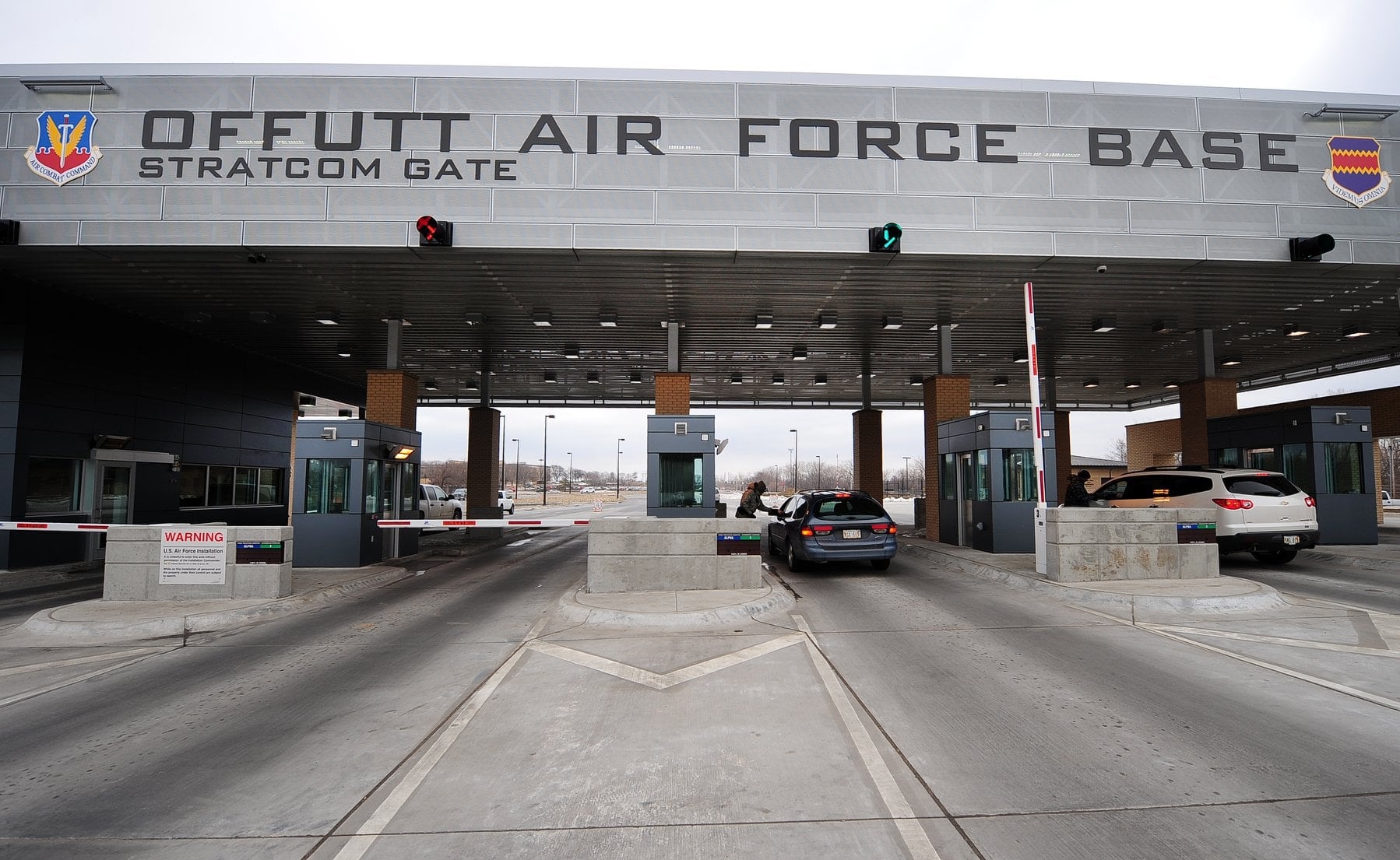Editor’s note: This story was first published in the Nebraska Examiner.
First-time drivers of electric vehicles are often wowed by the quicker acceleration when they push the gas pedal versus a typical car with a combustion engine.
This change has researchers at the University of Nebraska-Lincoln and Auburn University plotting a new defense for military bases — one that can withstand a misused Rivian, Hummer or Tesla.
Modern entrances to military bases, including those at Offutt Air Force Base near Bellevue, are designed to maximize the chances that guards and guardrails, fences and other barriers stop assaults by drivers.
Rethinking secure entrances
The job of UNL researcher Cody Stolle and Auburn and Army researchers is to rethink the design of those entrances, barriers and processes for electric vehicles.

Many will need to be redesigned to withstand the differences in acceleration and weight distribution of electric vehicles, which often weigh more and get to their top speed quicker.
Electric vehicles, Stolle said, moved engines backward and lower on the car’s frame. They reinforced car frames differently on the sides, as well, to protect batteries.
“It changes response times,” he said. “It’s how fast you need structures and people to be ready.”
Army-funded research
The project will be powered by $5 million in funding from the U.S. Army’s Engineer Research and Development Center, based in Vicksburg, Mississippi. The new research team’s work started in May and is expected to take two years.
The Army will keep $1.3 million of the total to study the differences and “crushability” of electric vehicles. Auburn University will get $1.4 million to study how to identify, isolate and respond when a driver is acting erratically.
The UNL team, working out of its Midwest Roadside Safety Facility, will receive $2.2 million to study the structures that keep out hostile vehicles and characterize vehicles and their capabilities, including crash tests that will measure the forces of impact and how barriers and other elements might need to adapt, Stolle said.
UNL’s safety lab is one of the few that can safely perform crash tests in excess of 100 mph, officials said. The UNL researchers include Ron Faller, an expert in structure and energy absorption; Joshua Steelman, an expert in structures and assembly and steel design; and Jim Holloway, who runs the test site and data collection, plus staff and students.
Safety is the goal
The aim of the combined team’s work: to delay, disrupt and damage potential “threat vehicles” if they try to get past a military base barrier or stop point too quickly, Stolle said.
The research team is trying to do this while also minimizing the damage that barriers, structures and people do to vehicles that aren’t a threat, but accidentally breach those defenses.
This work builds on UNL researchers’ gains at making highway driving safer, using cost-effective barriers that spread nationally to save lives, Stolle said.
It also might harness some of the technology UNL researchers used to make racetrack driving safer, redirecting high-speed drivers back toward the track and away from spectators.
National security, road safety stakes
The stakes in the military projects are real. People trying to do harm want to get past hardened base entrances, Stolle said.
Electric vehicles, he said, force new thinking about how to keep bad actors out.
“Anyone who is a threat is trying to find and exploit weaknesses,” Stolle said. “If they can gain access to the secure perimeter, the amount of destruction they can do is very significant. Our job is to help keep them out.”
Many of the barriers the project redesigns for the military could eventually have applications for civilian use, Stolle said. Among them: redesigning roadside barriers to protect drivers of and from electric vehicles.
“The U.S. and the world will learn from what we do,” he said.
Aaron Sanderford has tackled various news roles in his 20-plus year career. He has reported on politics, crime, courts, government and business for the Omaha World-Herald and Lincoln Journal-Star. He also worked as an assignment editor and editorial writer. He was an investigative reporter at KMTV.





